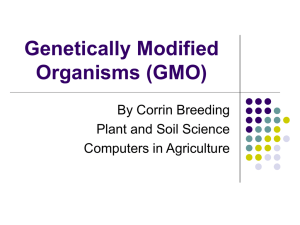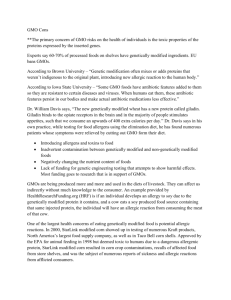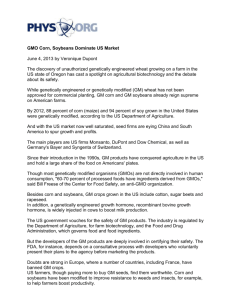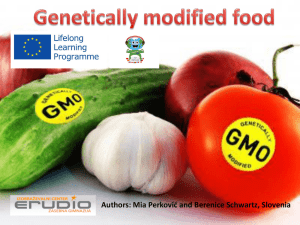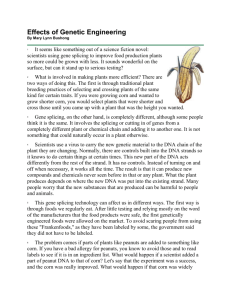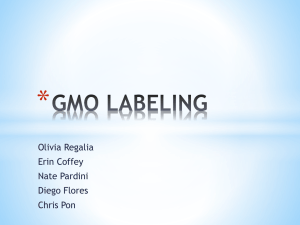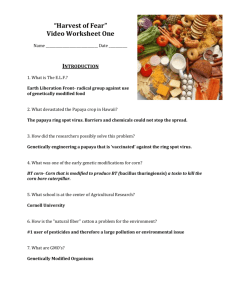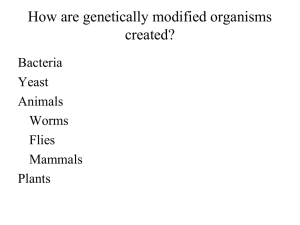College Essay
advertisement
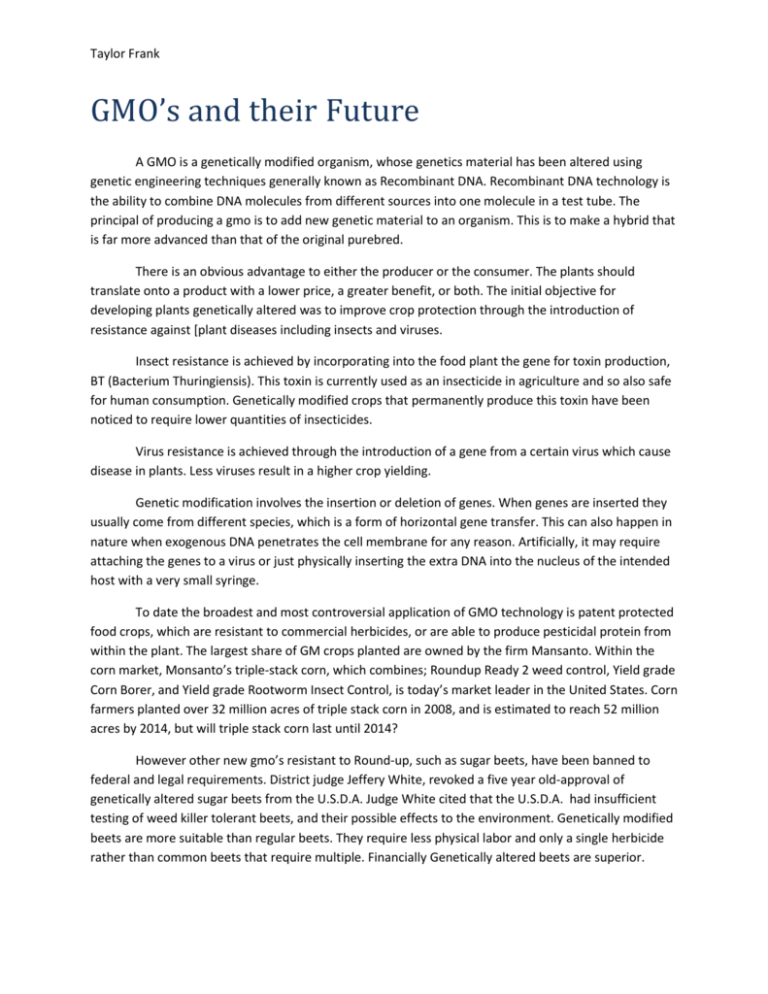
Taylor Frank GMO’s and their Future A GMO is a genetically modified organism, whose genetics material has been altered using genetic engineering techniques generally known as Recombinant DNA. Recombinant DNA technology is the ability to combine DNA molecules from different sources into one molecule in a test tube. The principal of producing a gmo is to add new genetic material to an organism. This is to make a hybrid that is far more advanced than that of the original purebred. There is an obvious advantage to either the producer or the consumer. The plants should translate onto a product with a lower price, a greater benefit, or both. The initial objective for developing plants genetically altered was to improve crop protection through the introduction of resistance against [plant diseases including insects and viruses. Insect resistance is achieved by incorporating into the food plant the gene for toxin production, BT (Bacterium Thuringiensis). This toxin is currently used as an insecticide in agriculture and so also safe for human consumption. Genetically modified crops that permanently produce this toxin have been noticed to require lower quantities of insecticides. Virus resistance is achieved through the introduction of a gene from a certain virus which cause disease in plants. Less viruses result in a higher crop yielding. Genetic modification involves the insertion or deletion of genes. When genes are inserted they usually come from different species, which is a form of horizontal gene transfer. This can also happen in nature when exogenous DNA penetrates the cell membrane for any reason. Artificially, it may require attaching the genes to a virus or just physically inserting the extra DNA into the nucleus of the intended host with a very small syringe. To date the broadest and most controversial application of GMO technology is patent protected food crops, which are resistant to commercial herbicides, or are able to produce pesticidal protein from within the plant. The largest share of GM crops planted are owned by the firm Mansanto. Within the corn market, Monsanto’s triple-stack corn, which combines; Roundup Ready 2 weed control, Yield grade Corn Borer, and Yield grade Rootworm Insect Control, is today’s market leader in the United States. Corn farmers planted over 32 million acres of triple stack corn in 2008, and is estimated to reach 52 million acres by 2014, but will triple stack corn last until 2014? However other new gmo’s resistant to Round-up, such as sugar beets, have been banned to federal and legal requirements. District judge Jeffery White, revoked a five year old-approval of genetically altered sugar beets from the U.S.D.A. Judge White cited that the U.S.D.A. had insufficient testing of weed killer tolerant beets, and their possible effects to the environment. Genetically modified beets are more suitable than regular beets. They require less physical labor and only a single herbicide rather than common beets that require multiple. Financially Genetically altered beets are superior. Taylor Frank Well once upon a time a scientist discovered a weed resistant to Round-up. He took these genes and incorporated then in a sugar beet seed. Hoping for the result of a crop that can be planted, sprayed with weed killer, and still survive while all other vegetation will die or expire. But… the problem is that year after year unwanted weeds become more and more resistant to our ‘unstoppable’ and powerful weed killer, Round-up. What will we use to kill them? No one is quite sure yet, and this scare leads researchers to want more testing and more results turned o to officials before farther beet production.
